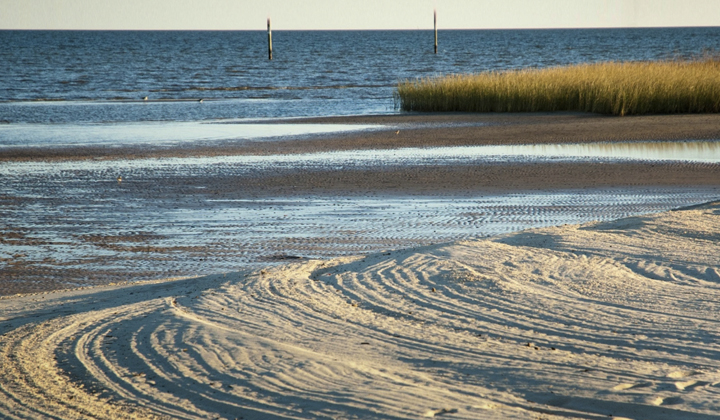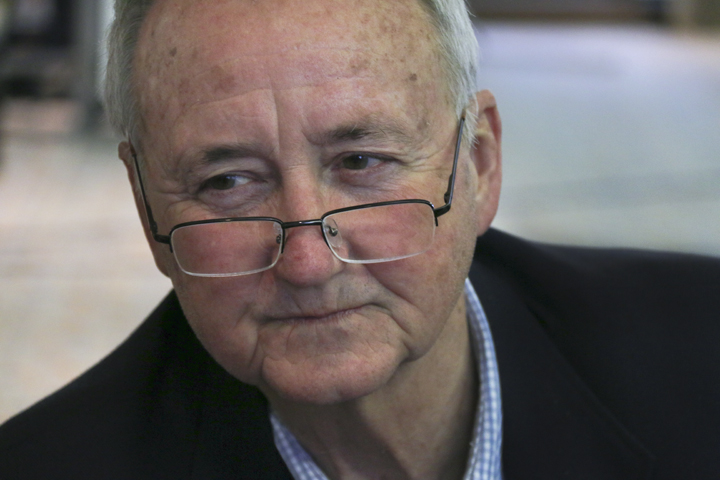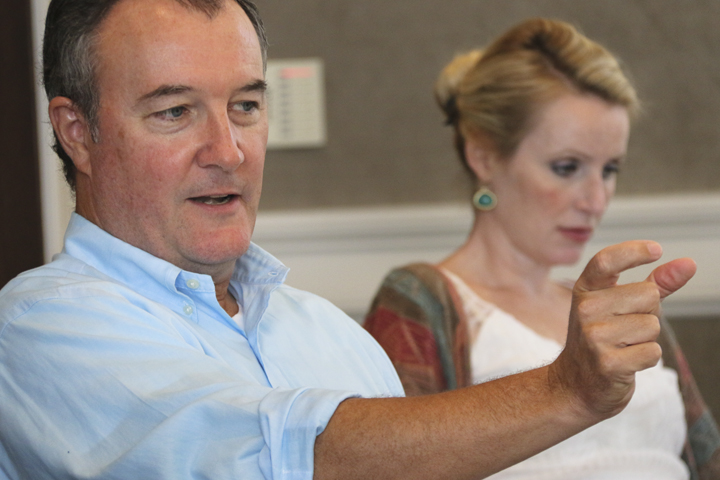
A Gulf restoration plan has been announced by the National Oceanic and Atmospheric Administration and the Natural Resource Damage Assessment trustees. Photo: NOAA
by Ed Lallo/Gulf Seafood News Editor

Phase III Early Restoration Project Locations Map: NOAA
A formal Record of Decision to implement a Gulf restoration plan has been announced by the National Oceanic and Atmospheric Administration (NOAA) and the Natural Resource Damage Assessment trustees in the Deepwater Horizon oil spill which occurred off the shores of Louisiana in 2010.
The goal of the 44 projects, totaling an estimated $627 million, is to restore barrier islands, shorelines, dunes, underwater grasses and oyster beds along the Florida to Louisiana coastline. The announcement marks the largest number of Gulf restoration projects slated since the spill with the aim to address a range of injuries to natural resources and the loss of recreational use.
“Preserving, protecting, and restoring natural resources is an integral part of our efforts to foster resilience in communities nationwide, including those affected by the Deep Water Horizon oil spill,” said Kathryn D. Sullivan, Ph.D., Under Secretary of Commerce for Oceans and Atmosphere and NOAA Administrator. “These projects reflect an earnest commitment to the Gulf and will enhance the region’s economic, social, and ecological resilience in the future.”
Habitat the Key

According to Gulf Seafood Institute (GSI) Mississippi board member Corky Perret, “Habitat is the key, it’s first what you do to an animal’s habitat then what you do to the animals.” Photo: Ed Lallo/Newsroom Ink
According to Gulf Seafood Institute (GSI) Mississippi board member Corky Perret, “Habitat is the key, it’s first what you do to an animal’s habitat then what you do to the animals. These restoration projects should create and/or restore habitat vital to our fish and wildlife resources. The Mississippi project is desperately needed, as are any projects stabilizing the barrier islands.”
NOAA, which is directly involved in the implementation of only four of the proposed projects, is supporting an overall Early Restoration plan that includes both ecological and human use projects as outlined in the Final Programmatic and Phase III Early Restoration Plan and Early Restoration Programmatic Environmental Impact Statement.
“Early restoration provides an opportunity to implement restoration projects agreed upon by the trustees and BP prior to the completion of the full natural resource damage assessment and restoration plan,” said Bob Gill, a GSI board member from Florida. “The government has found BP, and other responsible parties, obligated to compensate the public for the full scope of the natural resource injury and lost use caused by the Deepwater Horizon oil spill, including the cost of assessing such injury and planning for restoration.”

“The investments to rehabilitate the critical coastal habitats of Louisiana begins the long road to a more sustainable delta,” said Louisiana Sea Grant director Robert Twilley (left) touring the Louisiana marshes. Photo: Sea Grant
According to the agency, its largest project will be in Louisiana to fund and execute restoration of beach, dune, and back-barrier marsh habitat on Chenier Ronquille, a barrier island off the state’s coast. The project is one of four barrier islands projects proposed for restoration as part of a $318 million Louisiana Outer Coast Restoration Project to be implemented by NOAA, the U.S. Department of Interior and Louisiana.
“The investments to rehabilitate the critical coastal habitats of Louisiana begins the long road to a more sustainable delta,” said Louisiana Sea Grant director Robert Twilley.
Alabama, Florida, Mississippi, and NOAA will also partner to undertake three “living shorelines” projects. These projects involve a blend of restoration technologies used to stabilize shorelines and restore fish and wildlife habitat. The three projects are:
- Alabama: The $5 million Swift Tract Living Shoreline Project to construct approximately 1.6 miles of breakwaters covered with oyster shell to reduce shoreline erosion, protect salt marsh habitat, and restore ecosystem diversity and productivity in Mobile Bay.
- Florida: NOAA will partner with the State of Florida on the $11 million Florida Pensacola Bay Living Shoreline Project to restore shoreline at two sites along the Pensacola waterfront. Both proposed sites feature breakwaters that will provide four acres of reef habitat and protect the 18.8 acres of salt marsh habitat.
- Mississippi: NOAA will partner with the State of Mississippi to improve nearly six miles of shoreline as part of the proposed Hancock County Marsh Living Shoreline Project. The goal of this $50 million project is to reduce shoreline erosion by dampening wave energy and encouraging reestablishment of habitat in the region.
Focus on Wave Attenuation
“I am a little disappointed the NOAA projects focus primarily on wave attenuation,” said Alabama GSI board member Chris Nelson. “Gulf seafood production and processing industries have suffered, and continue to suffer, grievous injury due to the lack of seafood for harvest and distribution to our domestic market.”

“I am a little disappointed the NOAA projects focus primarily on wave attenuation,” said Alabama GSI board member Chris Nelson. Photo: Ed Lallo/Newsroom Ink
Nelson believes the living shorelines are indirect improvements to seafood production capacity through a largely theoretical enhancement to habitat. “What is unknown is what extent the habitat created through living shorelines is in any way comparable to more natural applications like cultch material on bottom for the purpose of growing oysters,” he said.
GSI understands the need for funding the current projects, however the organization feels future funding needs to address such projects as offshore restoration and the creation of fisheries habitat desperately needed by both recreational and commercial fishermen.
The new projects are to be funded through the $1 billion provided to the trustees by BP, as part of the 2011 Framework Agreement on early restoration. Ten early restoration projects already are in various stages of implementation as part of the first two phases of early restoration.
“It’s exciting to see such a comprehensive Gulf coast restoration plan funded with this amount of money move forward,” said GSI Texas board member Jim Gossen. “Let’s hope our decision makers, scientists and brightest minds have carefully studied the situation, and do what’s best to assure these precious resources are around for future generations. This may be our only chance to fix the mistakes of the past.”
Special thanks to Gulf Seafood Institute